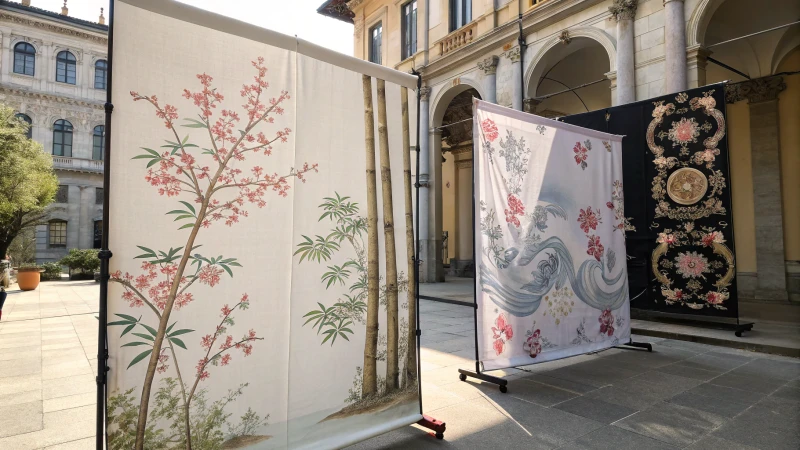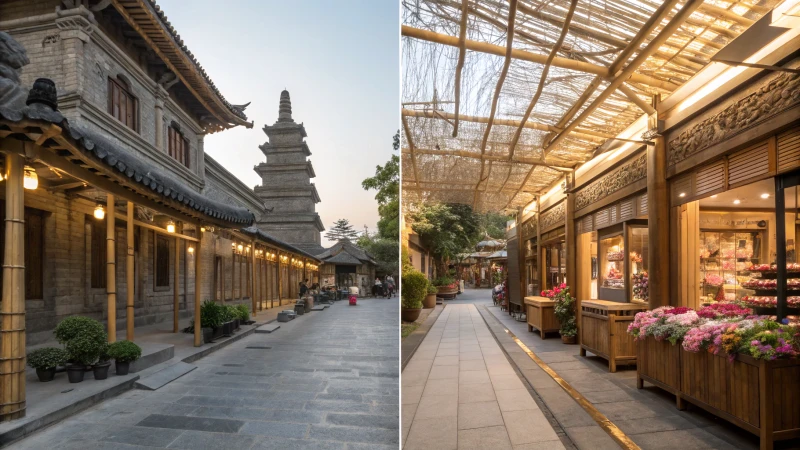
Ever wondered how to make your product design truly resonate across cultures?
To design cultural elements for different markets like Asia and Europe, I delve into regional aesthetics, incorporate local symbols, and adapt functionality to suit local habits. This strategy aligns my products with cultural values and preferences, enhancing their emotional appeal and market resonance.
While these initial steps provide a strong foundation for culturally resonant designs, diving deeper into specific strategies can uncover further opportunities for differentiation and consumer connection. It's fascinating to explore how specific cultural nuances can shape design choices, making each product feel uniquely tailored to its intended audience. Let’s dive into some tactics that have helped me connect with diverse markets.
Researching regional aesthetics enhances market success.True
Understanding local aesthetics helps align products with cultural values.
Ignoring local symbols can increase market appeal.False
Local symbols connect emotionally with consumers, boosting appeal.
How do Asian and European markets differ aesthetically?
Diving into the contrasting aesthetics of Asian and European markets is like embarking on a cultural journey through design.
Asian aesthetics lean towards simplicity and elegance with influences from nature and traditional motifs, while European designs often showcase classic, timeless elements with rustic charm. These differences are deeply rooted in unique cultural values, affecting consumer preferences and design styles.

The Influence of Nature and Tradition
When I think about Asian aesthetics, it's like taking a tranquil walk through a serene garden. The designs often draw from nature, weaving in elements like bamboo leaves or cherry blossoms, creating a sense of peace. This simplicity and elegance1 manifest through motifs that not only reflect nature but also convey harmony.
In Europe, the aesthetic vibe shifts to a canvas of history and timelessness. Imagine strolling through an old Italian village where every building whispers stories of the past. European designs tend to emphasize classic and timeless2 aesthetics, characterized by clean lines, earthy tones, and a rustic feel.
Symbolism in Design
Incorporating local symbols into design adds layers of meaning that connect deeply with consumers. In Asia, symbols like dragons or waves bring cultural richness, much like the intricate patterns I marveled at during a visit to a traditional Japanese festival. Meanwhile, European designs might feature Celtic knots or floral engravings.
| Region | Symbol Examples |
|---|---|
| Asia | Waves, Dragons |
| Europe | Celtic Knots, Florals |
Functional Design Variations
I've noticed how product design can reflect regional habits. In Asia, cutlery often adapts to local cuisine with smaller spoons or chopstick-like shapes for rice dishes. It's fascinating how these functional details cater to everyday dining experiences. Conversely, European cutlery tends to be robust, designed for hearty meals like pasta or roasts.
This adaptation ensures that products are practical and relevant to the everyday dining3 experiences of consumers.
Emotional Appeal Through Design
Designs that touch the heart resonate powerfully. Cherry blossom motifs evoke nostalgia in Japan, much like how tulip-inspired patterns might capture the spirit of the Netherlands. These familiar themes create emotional connections, fostering loyalty.
Understanding these aesthetic differences isn't just about design—it's about connecting with people on a deeper level. When products align with cultural values, they become more than just items; they become part of the story we share with those who use them.
Asian designs often incorporate natural motifs like bamboo leaves.True
Asian aesthetics frequently draw from nature, using elements like bamboo.
European designs rarely use floral engravings in their aesthetics.False
Floral engravings are common in European designs, reflecting tradition.
How Can Local Symbols Enhance Product Appeal in Different Regions?
Ever wonder how a simple dragon motif can transform your product's appeal in Asia or why a Celtic knot might win hearts in Europe?
Embracing local symbols in product design can significantly boost appeal by tapping into regional cultural aesthetics and values. This strategy builds emotional connections, sets products apart, and enhances relevance across diverse markets.

Understanding Regional Aesthetics
Diving into the world of regional aesthetics is like embarking on a cultural journey. To effectively utilize local symbols, it's essential to understand the cultural aesthetics4 of different regions. I remember when I first explored the nuances of Asian design preferences—simplicity and nature-inspired elegance truly captivated me. In contrast, my ventures into European markets revealed a love for classic designs, where clean lines and timeless beauty reign supreme.
Incorporating Cultural Symbols
Integrating cultural symbols can be a game-changer. Embedding region-specific symbols into products can create emotional resonance. Picture this: In Asia, motifs like dragons or cherry blossoms can make a product stand out. I recall an occasion when I chose to incorporate Celtic knots into a design, which was a hit among European consumers. These elements not only enhance the product's visual appeal but also convey cultural familiarity.
| Region | Symbols & Motifs |
|---|---|
| Asia | Dragons, Cherry Blossoms |
| Europe | Celtic Knots, Floral Engravings |
Adapting Functionality to Local Preferences
Functionality goes hand-in-hand with aesthetics. Localizing a product isn't just about appearance; functionality matters too. For instance, designing chopstick-friendly cutlery for Asian markets seemed daunting at first. But seeing the practicality resonate with local dining habits was rewarding. Similarly, adjusting utensils for European preferences made me appreciate the diverse culinary landscape.
Emotional Appeal through Familiarity
There's something magical about familiar symbols. Utilizing familiar symbols5 can evoke a sense of belonging and loyalty among consumers. Like the cherry blossom motifs I once used for a Japanese market—it sparked cultural pride and nostalgia, creating an emotional bond with consumers.
Sustainability Messages Aligned with Cultural Values
Tailoring sustainability messages to cultural values enhances appeal. Culturally tailored sustainability messages can further enhance product appeal. In Asia, emphasizing harmony with nature aligns seamlessly with traditional principles, while in Europe, highlighting renewable resources strikes a chord due to environmental activism.
Customized Packaging Design
Packaging is your product's first handshake with customers—a crucial element in product appeal. Using culturally relevant colors and typography isn't just eye-catching; it communicates your brand's values instantly.
| Region | Color Preferences |
|---|---|
| Asia | Red and Gold for prosperity |
| Europe | Pastel tones for modernity |
I remember opting for red and gold packaging for the Chinese market—a decision that resonated well with their symbolism of prosperity.
Testing and Iteration for Success
Feedback is your best friend on this journey. To ensure that localization efforts hit the mark, conducting focus groups and gathering feedback is crucial. This iterative process helps refine designs to align perfectly with market preferences, ensuring long-term success.
Conclusion Placeholder
Local symbols wield incredible power in enhancing product appeal, but their effective use requires deep research and understanding of target cultures' values and aesthetics. Thoughtful integration of these elements can significantly boost market resonance and consumer loyalty.
Asian markets prefer simplicity and nature-inspired designs.True
Asian aesthetics often value simplicity and natural elegance, enhancing appeal.
European consumers dislike Celtic knots in product designs.False
Celtic knots are appreciated in Europe for their cultural and aesthetic value.
Why is functionality adaptation crucial for market relevance?
Imagine you're navigating the ever-shifting tides of global markets, trying to stay afloat and ahead. It's a thrilling ride, but what's your secret to keeping relevant?
Functionality adaptation is crucial for businesses to remain relevant in diverse markets. By tailoring product features to meet local cultural, practical, and emotional needs, companies can enhance consumer engagement and maintain a competitive edge.

Understanding Functionality Adaptation
Think back to a time when you were at a bustling market abroad, say in Tokyo or Rome. The products there often seemed tailor-made for the locals, right? That's functionality adaptation at work. It's all about adjusting the nuts and bolts of a product to fit the unique tapestry of local cultures and practical needs. It's like when I realized my favorite American fast-food joint offered sushi rolls in Japan—mind-blowing! This kind of change can make or break consumer satisfaction and brand loyalty.
Examples of Functionality Adaptation
Take a walk with me through some fascinating examples of multinational companies6 mastering this art. Imagine McDonald's, which smartly tweaks its menu to include local delicacies—ever tried a McPaneer in India? Or consider how car companies craft models to suit regional tastes—yes, there's a reason those European cars are so sleek!
| Market | Example of Adaptation |
|---|---|
| Asia | Sushi rolls at fast-food chains |
| India | McPaneer burgers |
These are not just products; they're experiences tailored to our culinary customs.
The Role of Cultural Sensitivity
Now, let's talk about something close to my heart—cultural sensitivity. I remember buying a notebook in Japan adorned with delicate cherry blossoms. It was just a notebook, but those blossoms resonated with the local culture and felt special. By weaving local symbols or aesthetics into products, companies can forge a deep emotional connection with consumers. Think cherry blossoms in Japan or Celtic patterns in Europe—these little touches speak volumes.
This approach not only respects cultural nuances but also enhances a product's marketability7.
Practical Benefits of Functionality Adaptation
Beyond aesthetics, adapting functionality solves real-world challenges. Picture this: eco-friendly products that hit the mark in areas where green living is more than a trend—it's a way of life. By focusing on biodegradable materials and sustainable production, companies tap into local environmental values.
Case Studies of Successful Adaptation
Let's dive into some stories of success. Nike is a powerhouse that thrives by grasping regional behaviors and preferences through localized marketing strategies and products. By aligning with local tastes, they maintain their global allure.
| Brand | Strategy |
|---|---|
| Nike | Localized marketing campaigns |
| IKEA | Customizable furniture options |
These examples show how being attuned to local nuances is key to staying relevant8. Adapting effectively isn't just smart; it's essential for thriving in diverse markets.
Functionality adaptation enhances consumer satisfaction.True
Adapting products to local needs improves user experience, boosting satisfaction.
Cultural sensitivity has no impact on product marketability.False
Incorporating local aesthetics can significantly enhance a product's appeal.
How Does Emotional Appeal Drive Consumer Loyalty Across Cultures?
Ever wondered why some brands just "get you" across cultures?
Emotional appeal builds consumer loyalty by aligning brand messages with cultural values, evoking trust and forming deep emotional connections. Brands that master this art can create lasting relationships with customers across diverse cultural landscapes.

Understanding Cultural Nuances
To leverage emotional appeal effectively, brands must understand and respect cultural nuances. I remember the first time I felt an advertisement truly spoke to me—it was a simple video of a family gathering around the dinner table, sharing laughs and stories. It reminded me of my own family dinners, connecting me instantly with the brand. This kind of emotional resonance is what brands aim for when they dive into cultural nuances.
For example, in Japan, campaigns that embrace nature-inspired aesthetics9 often click because they reflect the country's deep-rooted appreciation for harmony with nature. Contrast that with India, where vibrant, bold colors can capture the lively spirit of its culture.
| Region | Emotional Triggers | Examples |
|---|---|---|
| Asia | Nature, Harmony | Bamboo motifs, Zen minimalism |
| Europe | Heritage, Elegance | Celtic designs, Classic tones |
Leveraging Local Symbols
Incorporating local symbols can be like sprinkling a little magic dust on your marketing efforts. When I see cherry blossoms in a design, I'm immediately transported to springtime in Japan—a season that symbolizes renewal and beauty. Brands that use such traditional motifs10 can evoke a strong sense of cultural identity and belonging.
Imagine the delight on a Dutch consumer’s face when they spot tulips on product packaging—it’s like a nod to their heritage. This strategy not only attracts attention but also cultivates loyalty by respecting and celebrating local heritage.
Adapting Messaging to Emotional Values
Messaging is not just about what you say; it’s about how it makes people feel. In community-focused cultures, messages highlighting shared experiences can strike a chord. I’ve always found that promoting communal benefits resonates deeply in such regions.
Conversely, in cultures where individuality reigns supreme, emphasizing personal achievements and aspirations can be more impactful.
Emotional Appeal Through Storytelling
Who doesn’t love a good story? It’s one of the oldest ways to evoke emotion. Brands can craft stories that weave in cultural tales11 or historical events to create personal and relatable narratives.
Whenever I hear a brand’s story that mirrors a familiar cultural theme, it feels like discovering a piece of my own history.
The Role of Emotional Branding in Consumer Loyalty
Creating a brand personality that hits the emotional sweet spot can be transformative. By tapping into emotional triggers like family values12, success, or tradition—brands can craft identities that foster loyalty.
It’s like when you find a product that doesn’t just serve its purpose but feels like it was made just for you.
Implementing Emotional Appeal Strategically
The strategic implementation of emotional appeal is akin to orchestrating a symphony; each note must be perfectly timed and executed. Brands must consider both local customs13 and maintain global consistency to thrive.
Continuous research into cultural trends ensures that brands remain relevant and engaging across different markets.
By taking a multidimensional approach to emotional appeal, brands don’t just nurture loyalty—they elevate their reputation as culturally aware and inclusive entities.
Nature motifs resonate with Japanese consumers.True
Japanese culture values harmony with nature, making nature motifs effective.
Bold colors are less appealing in Indian markets.False
Indian consumers often favor bold and vibrant colors in designs.
Conclusion
This article explores designing cultural elements for diverse markets by understanding regional aesthetics, incorporating local symbols, adapting functionality, and enhancing emotional appeal to resonate with consumers in Asia and Europe.
-
Explore the elements of simplicity and elegance in Asian design to understand how they influence consumer preferences. ↩
-
Learn about classic and timeless European design features to see how they shape market trends. ↩
-
Investigate how cutlery design adapts to everyday dining experiences across cultures for practical insights. ↩
-
Explore how understanding cultural aesthetics can influence successful product design strategies. ↩
-
Learn how familiar symbols in marketing can create emotional connections and enhance brand loyalty. ↩
-
Discover how leading brands successfully tailor their offerings to fit regional tastes and preferences. ↩
-
Explore the advantages of integrating cultural elements into product design for enhanced consumer engagement. ↩
-
Learn from case studies of companies that have effectively adapted to maintain market relevance. ↩
-
Exploring this link provides insights into how Japanese culture values nature-inspired designs, helping brands create resonant and effective marketing strategies. ↩
-
Clicking here reveals how incorporating traditional European motifs can enhance product appeal by aligning with cultural heritage. ↩
-
This link offers guidance on using storytelling to connect with diverse audiences by embedding culturally relevant themes. ↩
-
This query helps understand how family-centric emotional branding can foster loyalty by aligning with important societal values. ↩
-
Understanding this concept aids in refining marketing strategies to respect and incorporate local customs effectively. ↩

